In San Diego, more and more people want their groceries delivered the same day – fast, fresh, and right to their doorstep. This growing demand has given rise to a new trend in online shopping called hyperlocal grocery delivery.
Hyperlocal delivery focuses on serving customers in a small area, such as a neighborhood, ZIP code or city district. This makes the service faster, more reliable, and better suited for local needs. In fact, the global hyperlocal grocery delivery market is growing quickly and is expected to cross $48 billion by 2025.
Studies show that 8 out of 10 customers now expect same-day delivery, and many prefer apps that can provide groceries within hours.
The real power behind such transformation is the rise of on-demand grocery apps. These apps connect local stores with nearby customers, manage inventory in real-time, and ensure deliveries are completed quickly and efficiently. They are the backbone of the hyperlocal delivery model that is now changing the way people shop in San Diego and beyond. In fact, you can build such solutions by partnering with an On-Demand Grocery Services App Development Company in San Diego.
This blog will talk about how on-demand grocery apps are making same-day delivery go hyperlocal in San Diego and transforming the shopping experience.
What Does “Hyperlocal Delivery” Mean?
Hyperlocal delivery is a business model that connects online customers with nearby offline shops, like local grocery stores, to fulfill orders quickly within a tight geographic area. If you place an order, it gets picked up from a local store and delivered to you in minutes, not even in days. This indicates that the shoppers in cities like San Diego, Los Angeles, and New York now expect same-day or even instant grocery delivery. This approach is becoming essential for grocery retailers as:
- It reduces long transportation routes and lowers the carbon footprint to make it more sustainable.
- It supports the local economy by helping nearby vendors and suppliers grow.
- It is easy to manage with advanced tools like AI, automation, and machine learning.
- It offers customers real-time tracking and delivery updates to improve transparency and trust.
How On-Demand Grocery Apps Help in Same-Day Hyperlocal Delivery
Instead of standing in long queues or waiting for days to get groceries delivered, customers can now order items with a few clicks and get them delivered within hours. The following are the ways on-demand grocery apps make same-day hyperlocal delivery smooth and efficient:
-
Easy App Interface Speeds Up Ordering
A simple and user-friendly app interface allows customers to place their orders quickly. It includes clear navigation, easy product categorization and a smooth checkout process that helps users save time. Instead of searching shelves in a physical store, customers can type in the product name and add it to their cart instantly. This reduces the time spent on shopping and speeds up the entire delivery process.
-
Local Store Discovery Saves Time
One of the biggest advantages of developing on-demand grocery apps is that they connect users with stores located in their nearby area. The app’s location-based technology identifies the closest vendor to the customer. This not only reduces the distance the delivery agent has to cover but also ensures groceries arrive much faster. Shorter delivery routes are the key reason why same-day delivery is possible.
-
Real-Time Inventory Avoids Delays
An on-demand white label grocery delivery app displays live stock availability of products. This means customers can see which items are available at the store before placing an order. It prevents the frustration of cancellations and replacements, which often cause delays in traditional grocery delivery. In fact, these apps ensure that only in-stock products are shown by syncing directly with store inventory.
-
Quick Search and Filters Make Shopping Faster
Instead of browsing hundreds of items, customers can use search bars, filters and sorting options to find what they need quickly. There are various features like “frequently bought items,” “shop by category,” or “reorder past items” that help in speeding up the ordering process. The less time a customer spends placing an order, the sooner the store and delivery agent can process it. This directly supports faster hyperlocal delivery.
-
Order Tracking Builds Transparency
Real-time order tracking is another powerful feature that makes on-demand grocery delivery reliable. Customers can see when the store is preparing their order, when the delivery agent picks it up, and when it is on its way. Notifications at every stage keep customers informed and remove uncertainty. This transparency builds trust and makes same-day delivery a smooth experience.
-
Multiple Payment Options Support Faster Checkout
Payment delays often slow down the delivery process. The experienced on-demand grocery app development company solves this problem by offering an app with multiple digital payment options like UPI, wallets, credit cards, and net banking. Customers can complete their payments instantly without depending on cash. Faster payment means the order is confirmed immediately, and the delivery cycle begins without delay.
-
Route Optimization Cuts Delivery Time
On-demand grocery apps use GPS and AI-powered algorithms to plan the shortest and most efficient delivery routes. As a result, delivery partners can reach customers faster by avoiding traffic-heavy roads and unnecessary diversions. For example, if a customer is located within a 3–4 km radius, the app ensures the delivery agent takes the fastest possible path.
-
Rewards and Loyalty Encourage Repeat Orders
Loyalty programs, discounts, and cashback offers encourage customers to shop more frequently. More frequent orders mean stores and delivery agents can optimize their delivery network and handle multiple orders in the same area at once. In short, rewards not only benefit the customer but also help apps streamline their same-day delivery system.
-
Push Notifications Keep Customers Updated
Push notifications play a key role in keeping the delivery process smooth. Customers get real-time updates about their order confirmation, preparation, out-for-delivery status and final delivery. These alerts reduce confusion and make sure the customer is always aware of the timeline. This communication makes same-day delivery more reliable and stress-free
-
Vendor Management Improves Speed and Accuracy
On-demand grocery apps provide store vendors with a digital dashboard to manage orders, update product availability and track deliveries. When vendors can quickly confirm orders and update stock, it reduces the chances of errors and delays. This makes the process faster, more accurate, and well-suited for hyperlocal delivery.
Conclusion
The future of grocery shopping is moving toward speed, convenience, and personalization. On-demand grocery apps are no longer just a trend but a necessity for modern urban lifestyles. Looking ahead, these apps will continue to evolve with smarter technologies such as AI-powered demand forecasting, eco-friendly delivery methods like e-bikes, and even drone-based deliveries for ultra-fast service. This shift will not only make same-day hyperlocal grocery delivery more efficient but also more sustainable.
If you are a grocery retailer in San Diego, now is the time to invest in a hyperlocal delivery app to meet growing customer expectations. Being a trusted Grocery Delivery App Development Company in San Diego, USA, ZimbleCode specializes in building feature-rich on-demand apps that empower businesses to stay competitive in the hyperlocal market.
Frequently Asked Questions (FAQs)
Q1. Are on-demand grocery apps affordable for customers?
They often provide competitive pricing and exclusive app discounts.
Q2. How do these apps handle sudden demand spikes?
They use smart technology to allocate deliveries quickly and efficiently.
Q3. Do hyperlocal grocery apps offer contactless delivery?
Many apps provide safe, no-contact delivery options for convenience.
Q4. Can grocery apps customize product suggestions?
AI-based features recommend products based on past purchases.

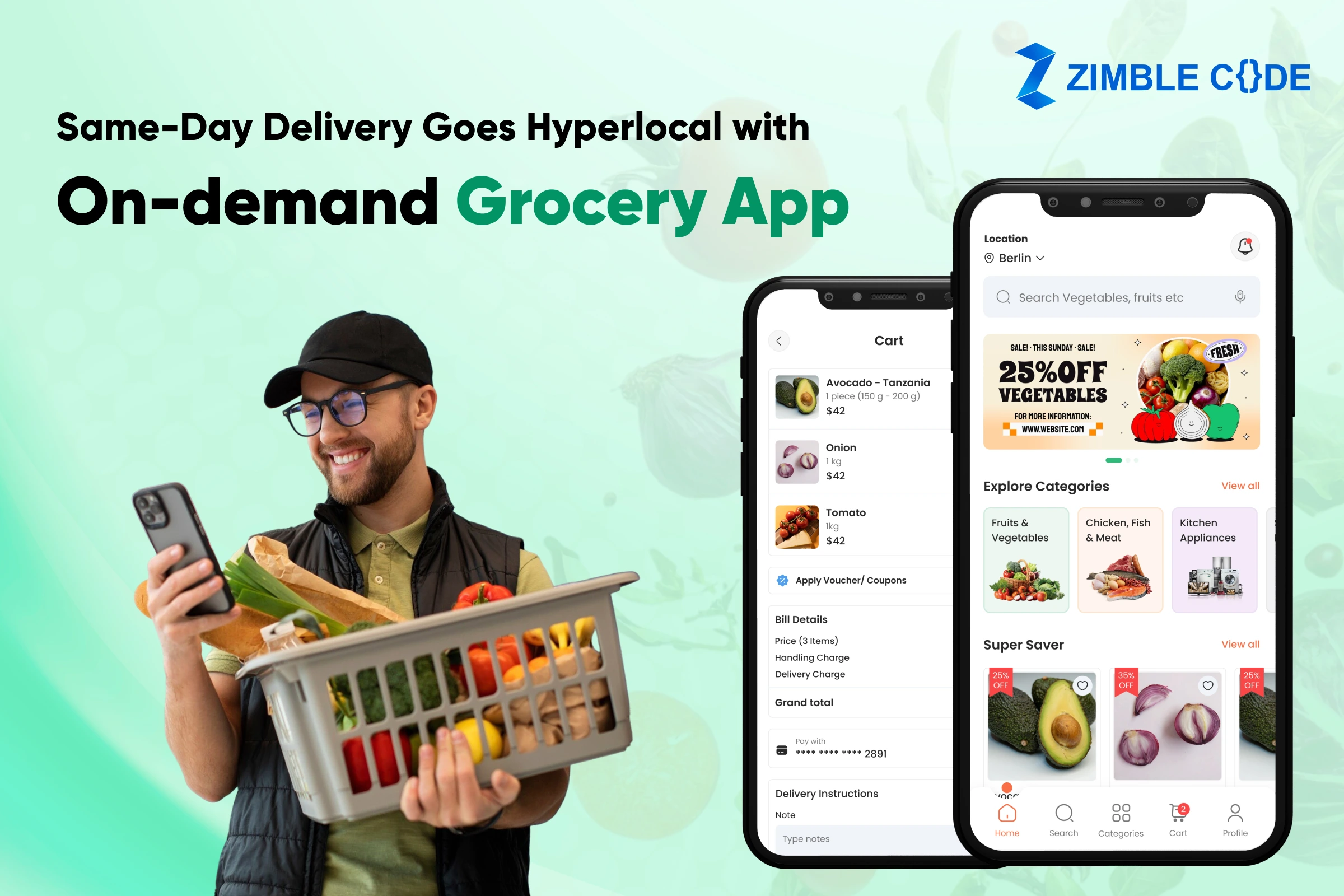




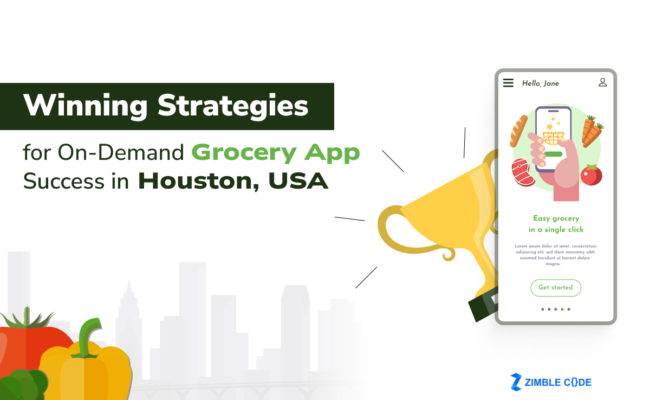

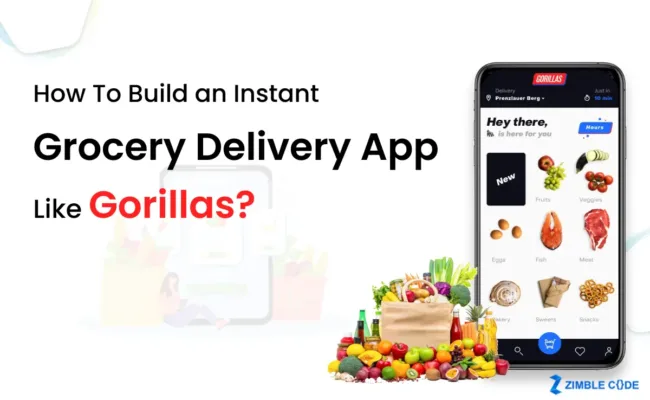
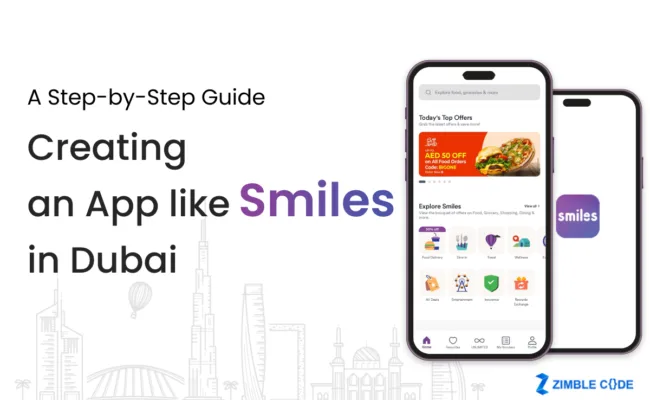
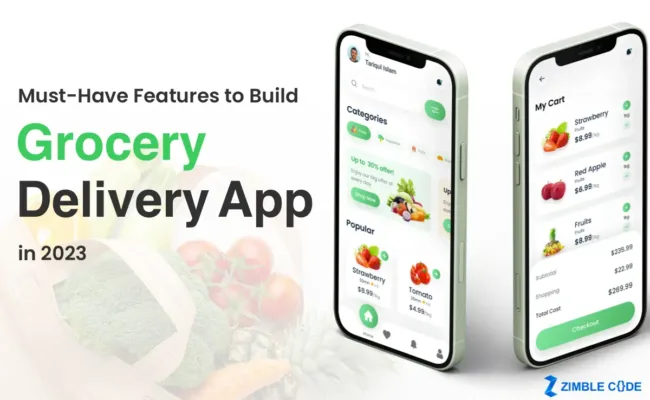

Leave A Comment